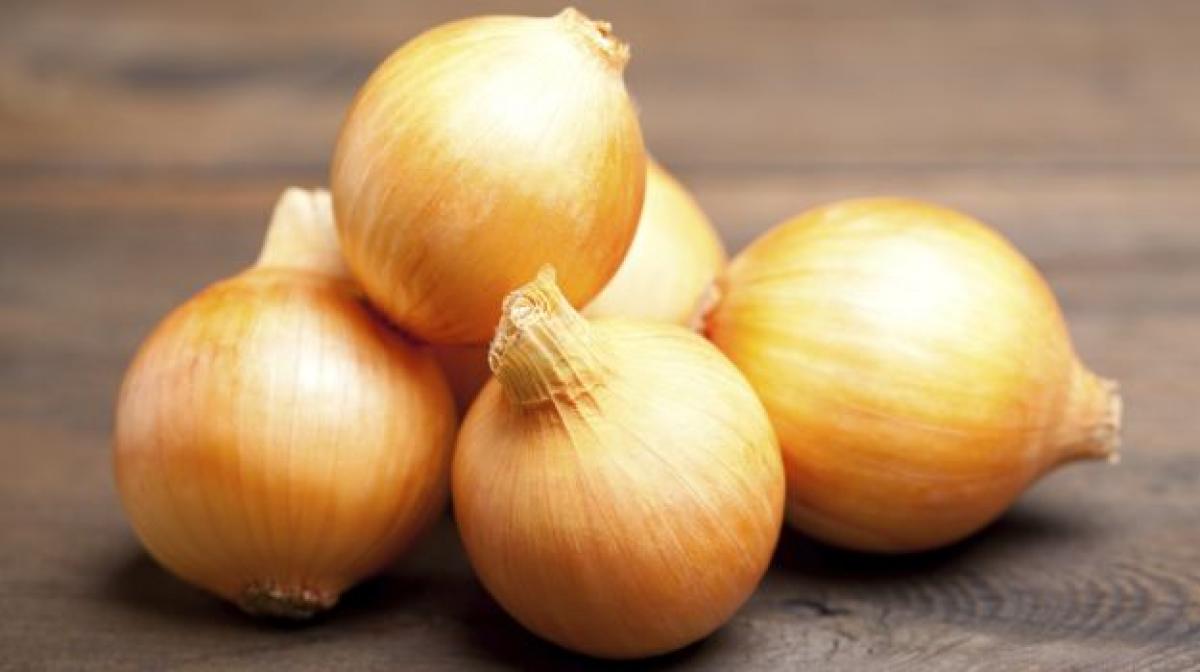Live
- Tragic Murder-Suicide in Begum Bazaar: Man Kills Wife and Son Before Ending His Own Life
- Double valve replacement surgery performed successfully in Kurnool GGH
- RBI gets bomb threat in 'Russian' language, 2nd time in a month
- Atul Subhash suicide case: Wife absconds, K'taka Police arrest her mother, brother
- Garena Free Fire MAX Redeem Codes for December 13, 2024: Exclusive Rewards Await!
- Call to include Veera Saivas in OBC category
- December 2024: 5G Smartphones Under Rs 25,000 - Nothing Phone (2a) and More
- Freshers’ Day celebrations held at SKCHS
- Fresh Case Filed Against Mohan Babu, Sons for Assault on Journalist in Pahadishareef
- Committed to providing every facility to devotees at Maha Kumbh, says PM Modi
Just In

With the soaring prices of onions, these are desperate times. Indian home cooks are racking their heads to find ways and means to cook food sans onions , without compromising on taste.
.jpg) With the soaring prices of onions, these are desperate times. Indian home cooks are racking their heads to find ways and means to cook food sans onions , without compromising on taste.
With the soaring prices of onions, these are desperate times. Indian home cooks are racking their heads to find ways and means to cook food sans onions , without compromising on taste.
Onions are primarily used to give taste, flavour and create the base for gravies in Indian food, yet there are so many recipes which don’t really need them. Taking inspiration also from the many communities which do not use onion in their food at all, there are a tonne of recipes which can be made without compromising on taste.
Adding Flavour: Onions contribute a depth of flavour in dry dishes like stir fries, lentil preparations like dal or sambar and even breakfast items like poha and upma.
Substitutes and cheats: Flavour can be added with other ingredients, whole and powdered spices like ginger and garlic, cumin, coriander, curry leaves and even green chillies.
For example, most south Indian style stir fries otherwise called poriyals can be made without onion. Simply add a tempering of whole mustard seeds, urad dal, curry leaves, broken dried red chillies and a little grated ginger and proceed with adding the vegetables to be sauteed.
Add a couple of tablespoons of fresh coconut to finish off the stir fry to give it some crunch. One can also use roasted and coarsely crushed peanuts added to a stir fry to finish it off. Upma, poha and even pulavs can be made in the same way, skipping the addition of onions in the tempering of the oil and adding the rest of the ingredients directly.
Preparations like dal can be made more flavourful by adding whole cumin, curry leaves and asafoetida in the tempering and skipping the onion. For topping pulav and biryani, use golden fried finely shredded cabbage instead of fried onions.
As a Base for Gravies: Onions are used to create a base for gravies and thicken them.. Almost every curry gravy will call for onions either to be added chopped, grated or ground to a paste.
Substitutes and cheats: For gravies like chole, rajma, potato gravies, ¼ cup of the cooked chole, rajma or potato can be smashed into a coarse paste and added to thicken the gravy just as with onions. After boiling the lentil or potatoes, set aside ¼ of a cup and mash it well. Follow the recipe with the rest of the ingredients and toward the end, while thickening the gravy, add this cup of mash to your dish and see the difference.
Pastes of chickpea flour (besan) or rice flour also can be made into a slurry with a little bit of water to thicken the gravy. To make rich gravies, a paste of coconut or roasted peanuts or roasted sesame or even cashews and almonds can be used. These are best suited for gravies with meat/chicken. ¼ cup of these seeds/nuts will be equal to one medium onion.
Saute the rest of the masala as required with the seed/nut of choice and grind it to a paste with a little water and use. These curry pastes can be used in kormas, stews and other rich gravies. That ubiquitous ingredient found in almost every Indian kitchen - yoghurt can also be used extensively to thicken vegetable or meat based gravies, and for the base of marinations.
Ground tomatoes also can be used to bulk up gravies, especially if the dish has a tangy element to it, tomatoes work well. The role of thickening and adding flavour to a gravy can be admirably done with the use of coconut milk as well, which is now conveniently available in tetrapacks.
For western cooking, onions are used as a base for sauces. For pasta and pizza sauce, a blend of tomato along with cooked cauliflower can be used to mimic onion and tomato sauces. To create a thickening agent, flour or maida can be used, or even fresh cream in case of soups.
While cutting down on the use of onions, remember to use the rest of the ingredients and play with the balance of flavours. Most recipes will have multiple ingredients which add depth. to it, tweaking them a little to use the available products will give similar results.
By: Arundati Rao

© 2024 Hyderabad Media House Limited/The Hans India. All rights reserved. Powered by hocalwire.com







